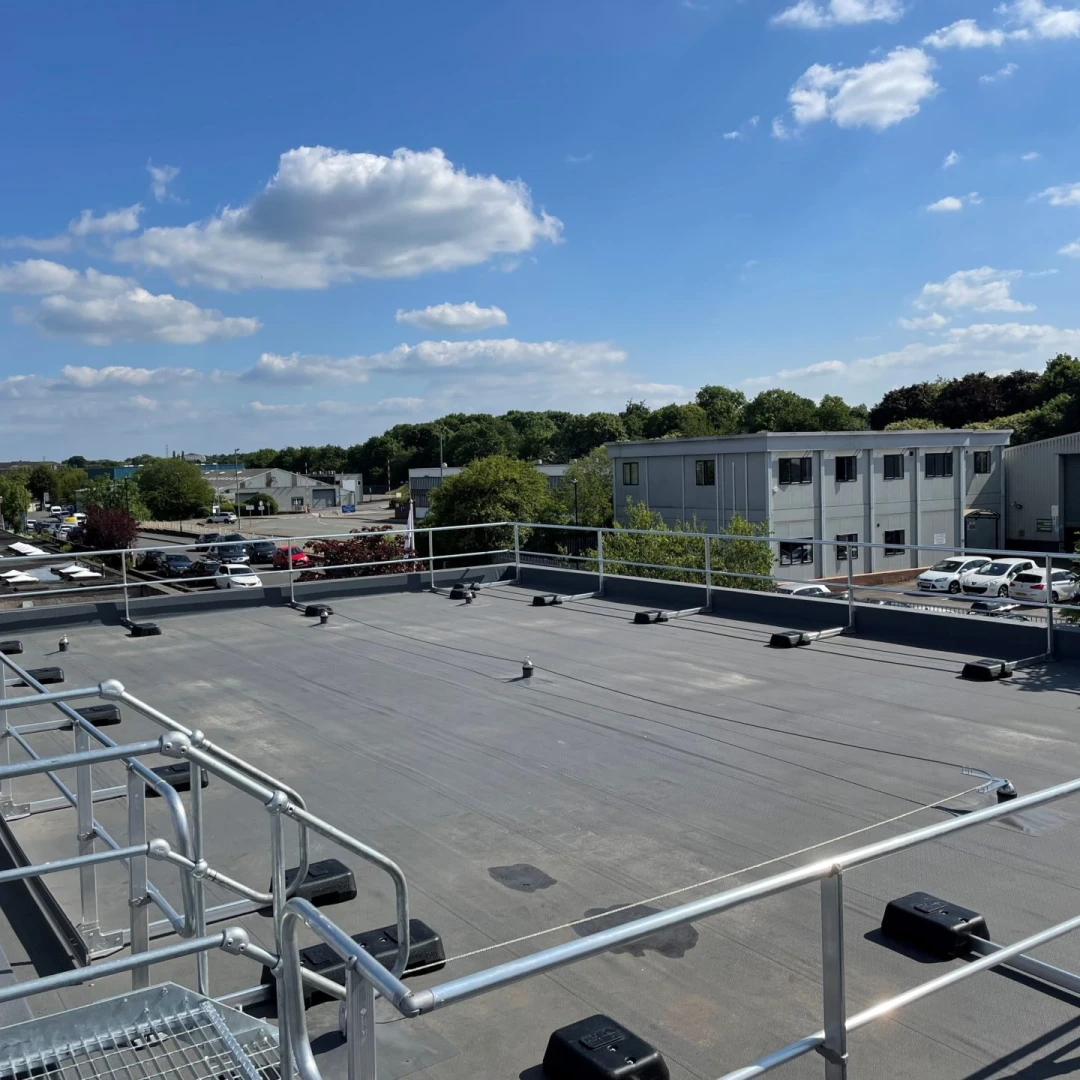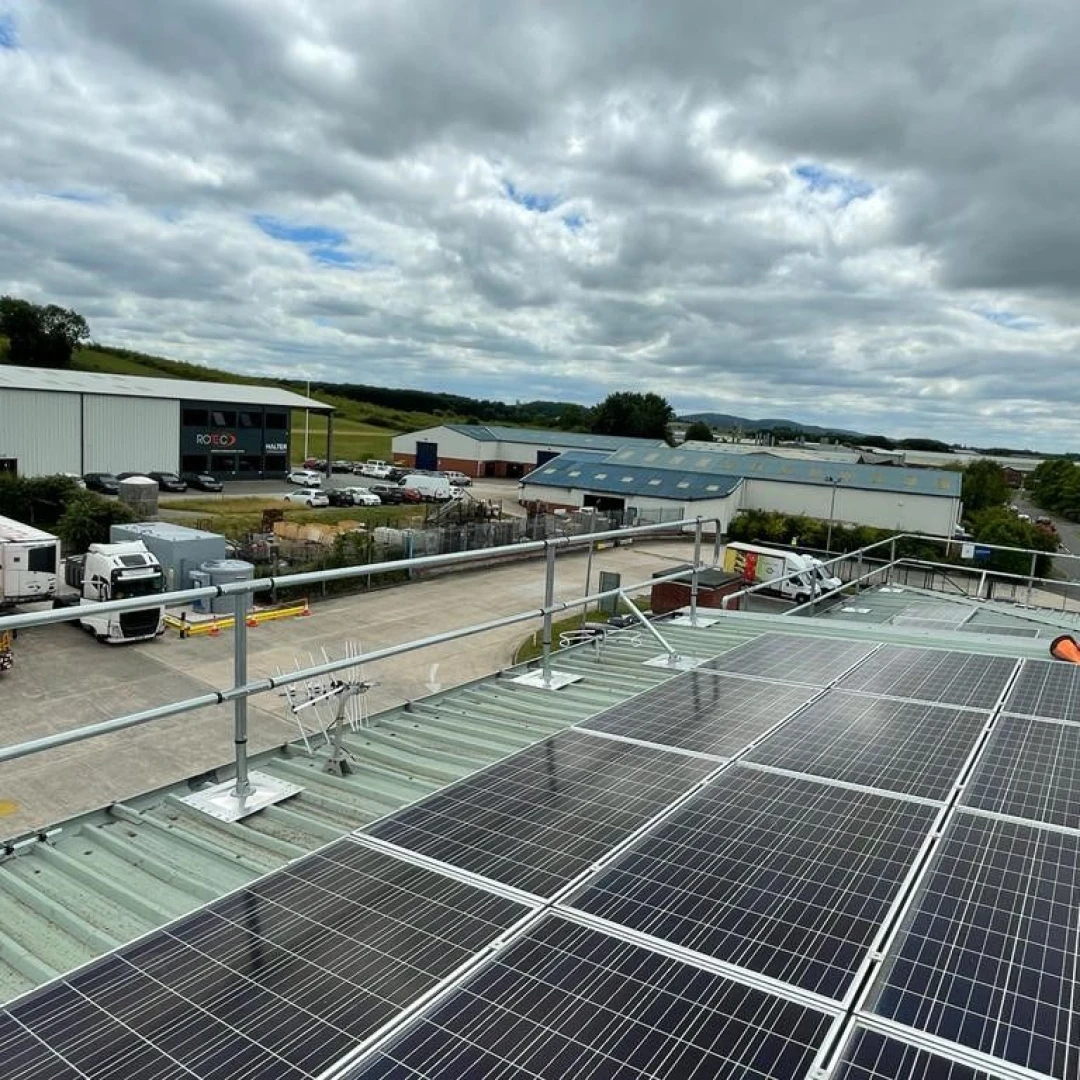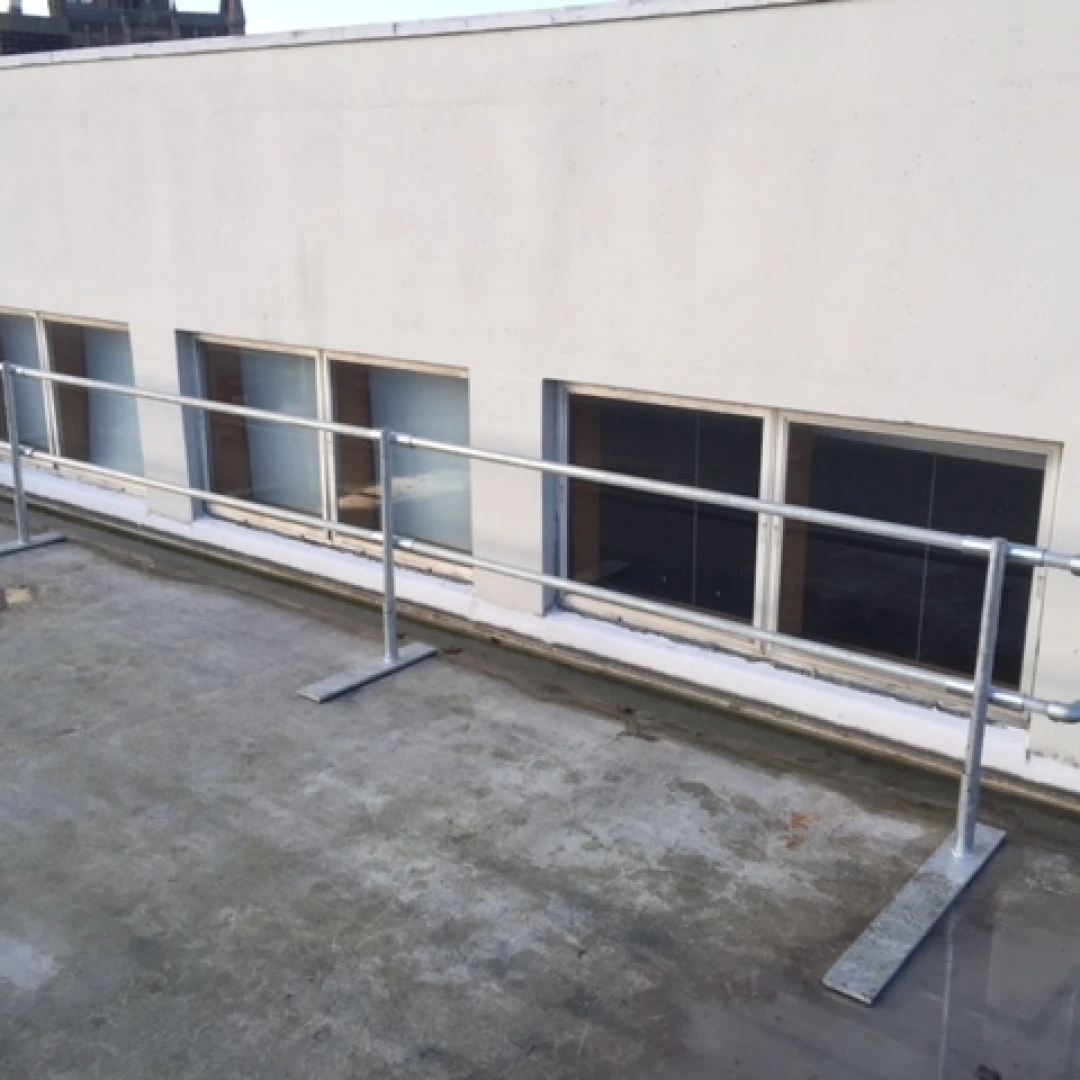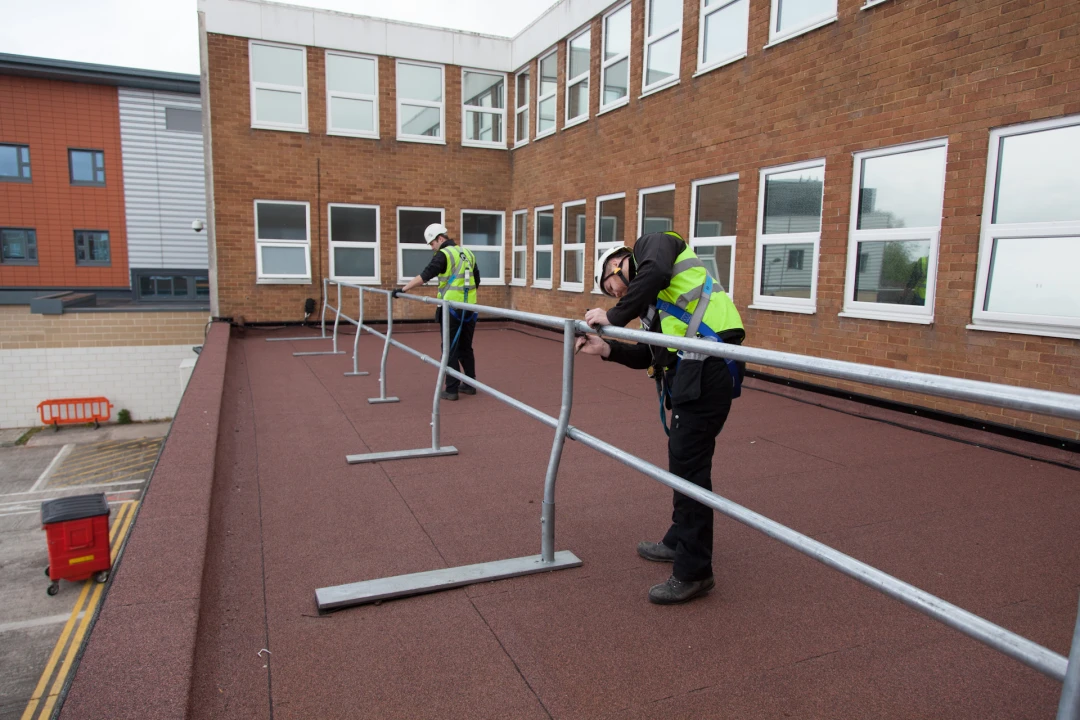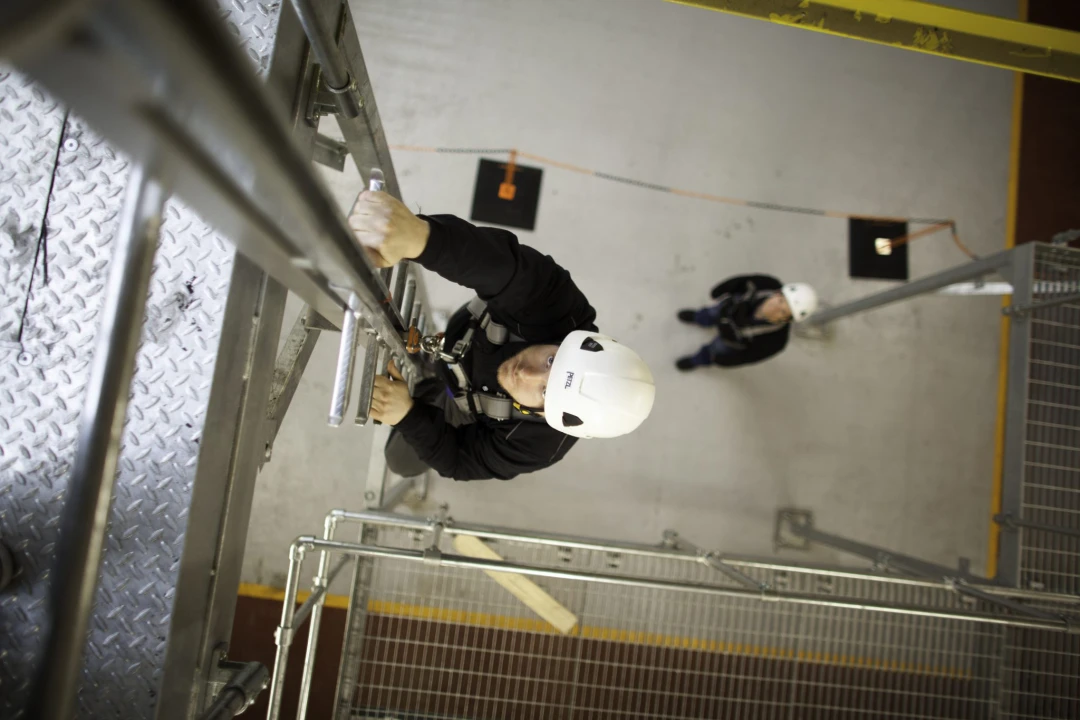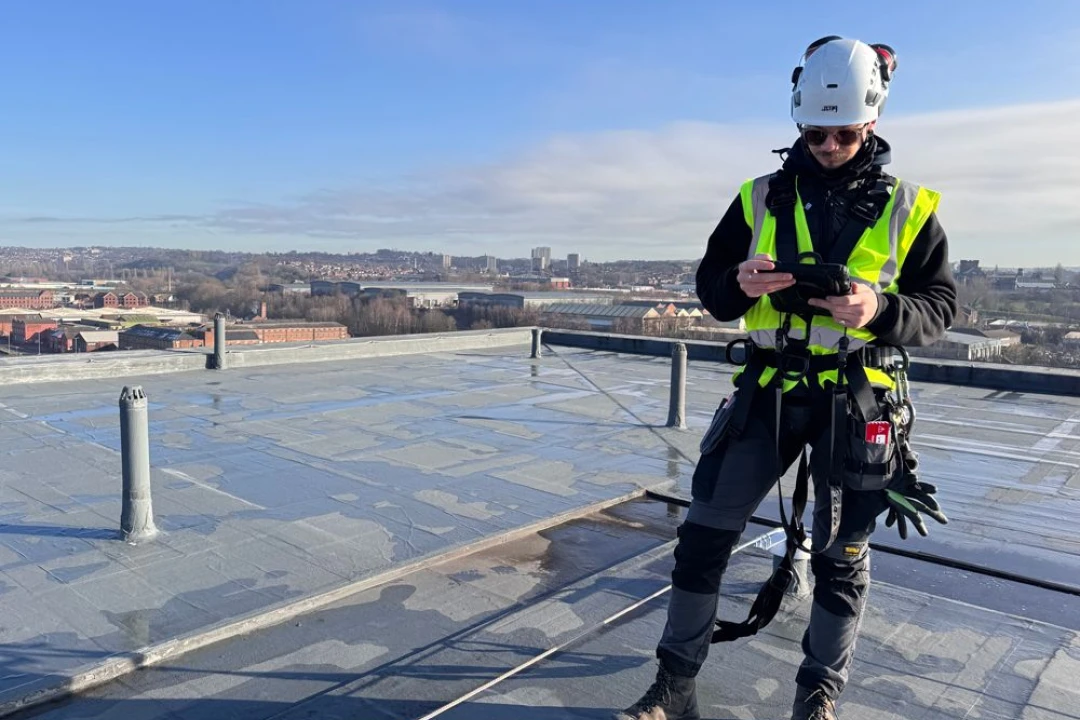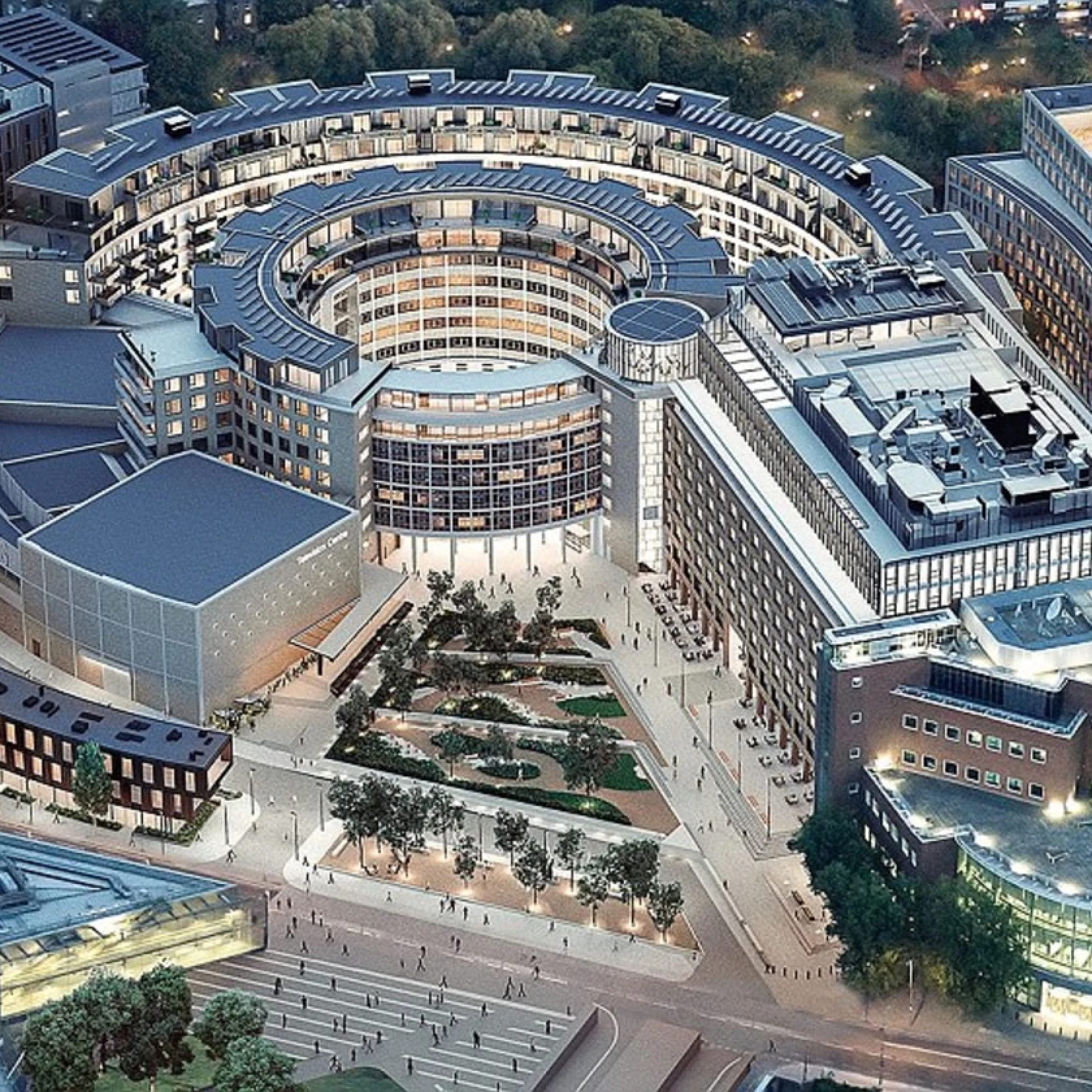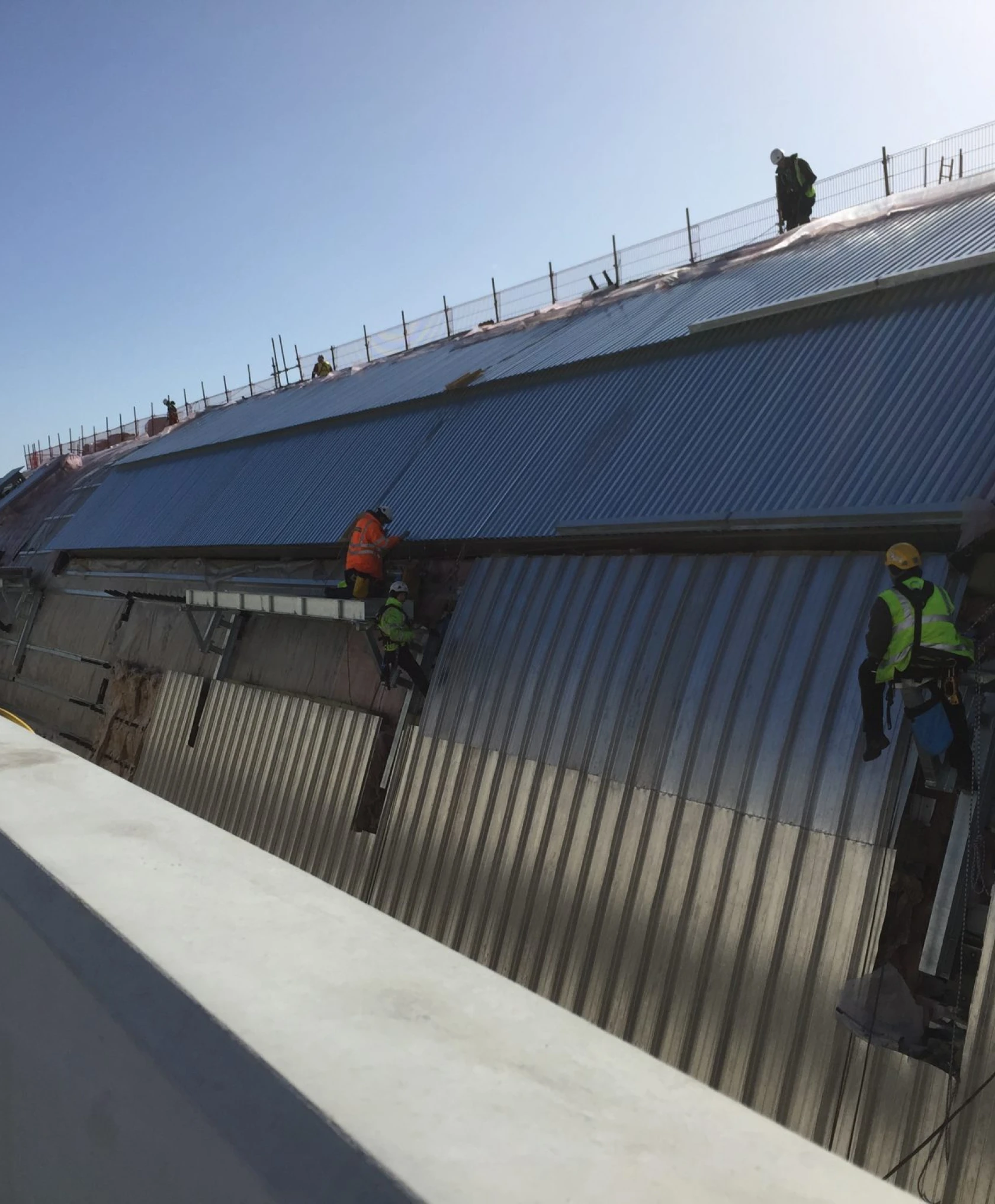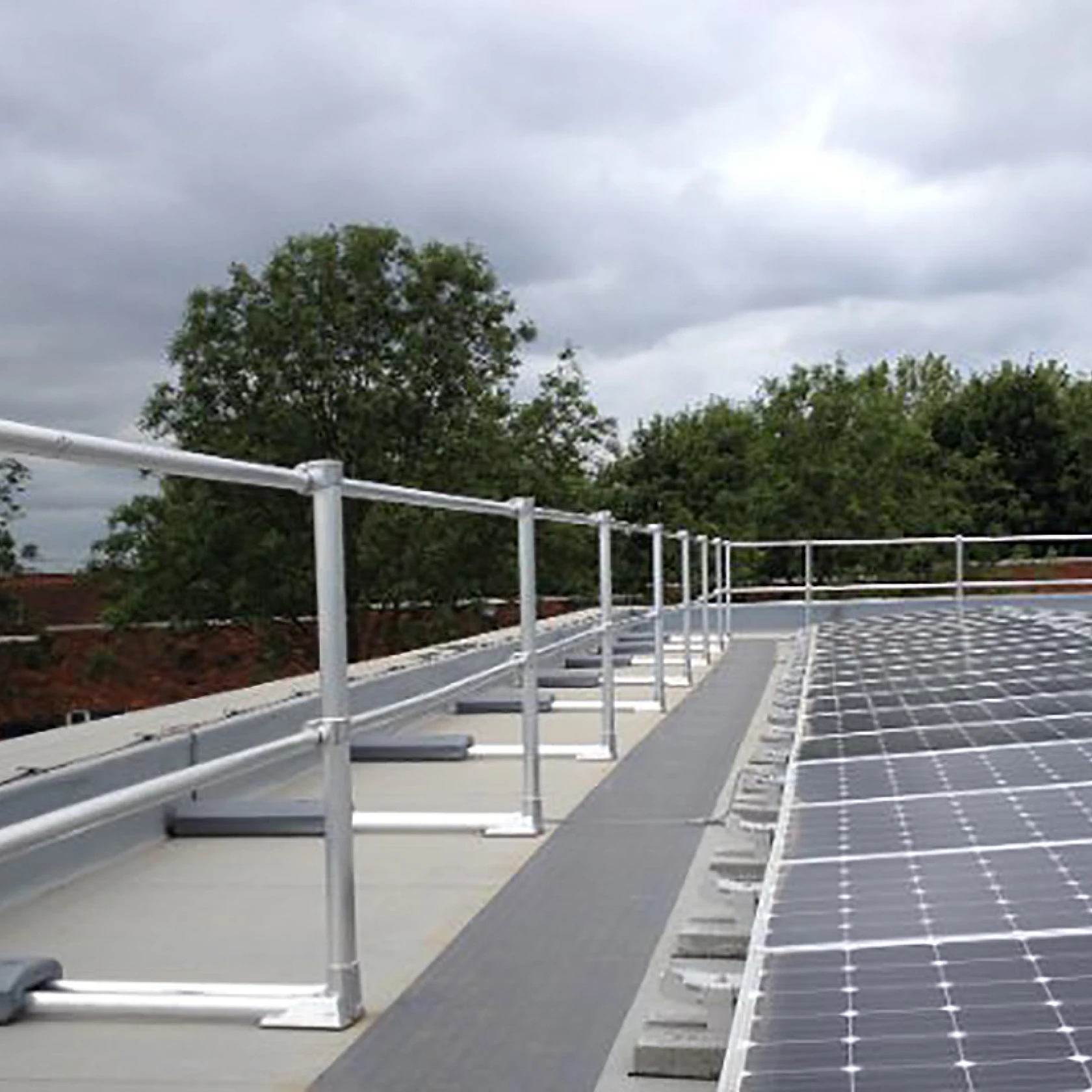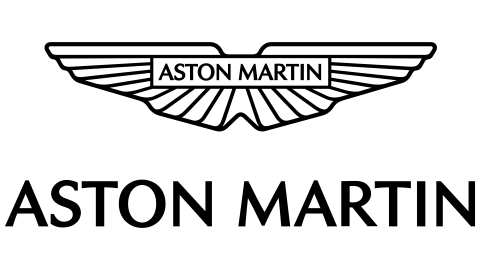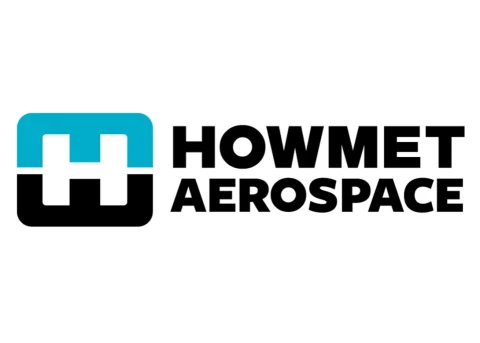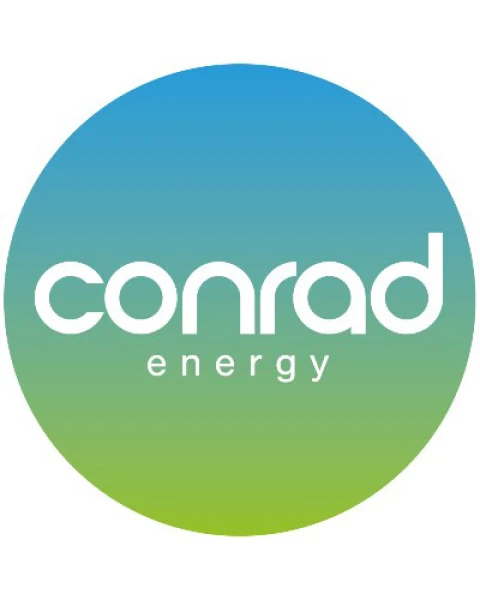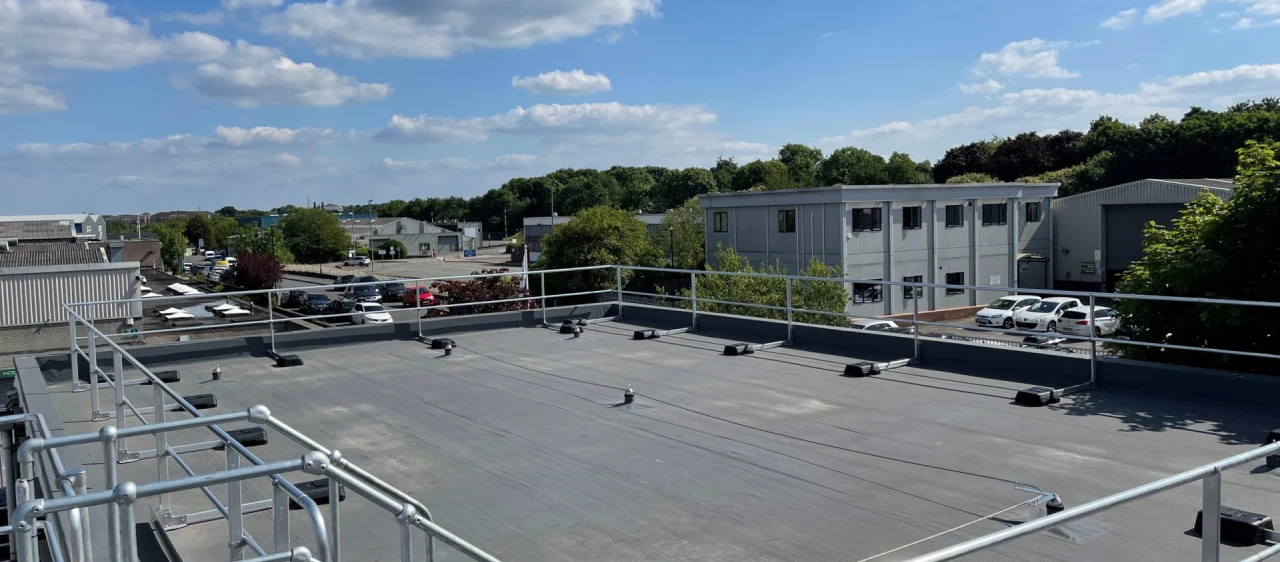

- Guardrails, Balustrades & Barriers
- Maintenance Guardrails
Roof Edge Protection - Maintenance Guardrails
There are many reasons why someone may need to be on a rooftop. It could be for roof cleaning or solar panel installation and maintenance, but no matter what the task is, safety is a priority.
Eurosafe can design, supply and install completely bespoke roof guardrail solutions.
Eurosafe offers a range of guardrail products, both fixed and freestanding, to provide collective roof edge protection to a majority of roof types in aluminium and steel for new build construction, refurbishment projects, and retrofit to existing buildings.
All of our systems are supplied and installed in accordance with EN 13374:2013 + A1:2018 class A and EN 14122-3:2016.
Frequently Asked Questions
The current applicable standard for a permanent freestanding guardrail is BS13700:2021. This sets out strict guidelines for the design and testing of a counterbalanced guardrail that is installed to provide a permanent means of roof edge protection.
The design is specific to the geographic location of the site and considers the maximum wind loading expected in that area, as well as at the height the system is to be install above ground level.
Compliance with this standard is critical for ensuring the safety and protection of those working at height.
While guardrails are commonly linked with edge protection and are typically built near the roof’s edge, their location should be dictated by each roof’s individual access requirements.
Guardrail installation requirements might vary greatly depending on the specific characteristics of each rooftop, as can ways for guaranteeing safe access.
Guardrails are typically constructed around the roof’s perimeter to provide safe access for maintenance operations such as gutter cleaning or repairing leaking roofs.
However, installing guardrails around the entire perimeter may not always be possible, or needed.
In such cases, it is acceptable to strategically install guardrails to allow access for specific critical maintenance tasks such as servicing air conditioning equipment or other plant.
A guardrail that is not providing edge protection and is only defining a safe area at roof level may not need to be designed to withstand the same loads as one that is required to provide protection against a fall. In such cases, a demarcation barrier, such as D-Marc 105™ may be sufficient to provide the level of safe access required.
A full risk assessment should be carried out by a competent person, and if there are any concerns or uncertainty, the advice of an expert should be sought.
Factors such as roof type, pitch, location, and the type of access required will determine this.
Most applications call for a freestanding guardrail with no need to penetrate the structure.
However, all guardrails should be manufactured and installed to the specified standard and should always meet load criteria.
Annual reviews are required for all fall protection systems.
Regulation 5 of the Workplace (Health, Safety, and Welfare) Regulations, the Work at Height Regulations 2005, and BS EN 395 require that equipment, including guardrails, be maintained and inspected on a regular basis by a certified individual.
Under BS13700:2021, all Permanent Counterweighted Guardrail Systems should be thoroughly inspected every 12 months, or after a significant event (e.g. severe weather). All inspections should be carried out by competent persons in accordance with the manufacturers recommendations and recorded in the System Technical File.
Guardrail inspections should be conducted more regularly in more problematic environments, such as coastal rooftops.
Related Case Studies
View all Case Studies

